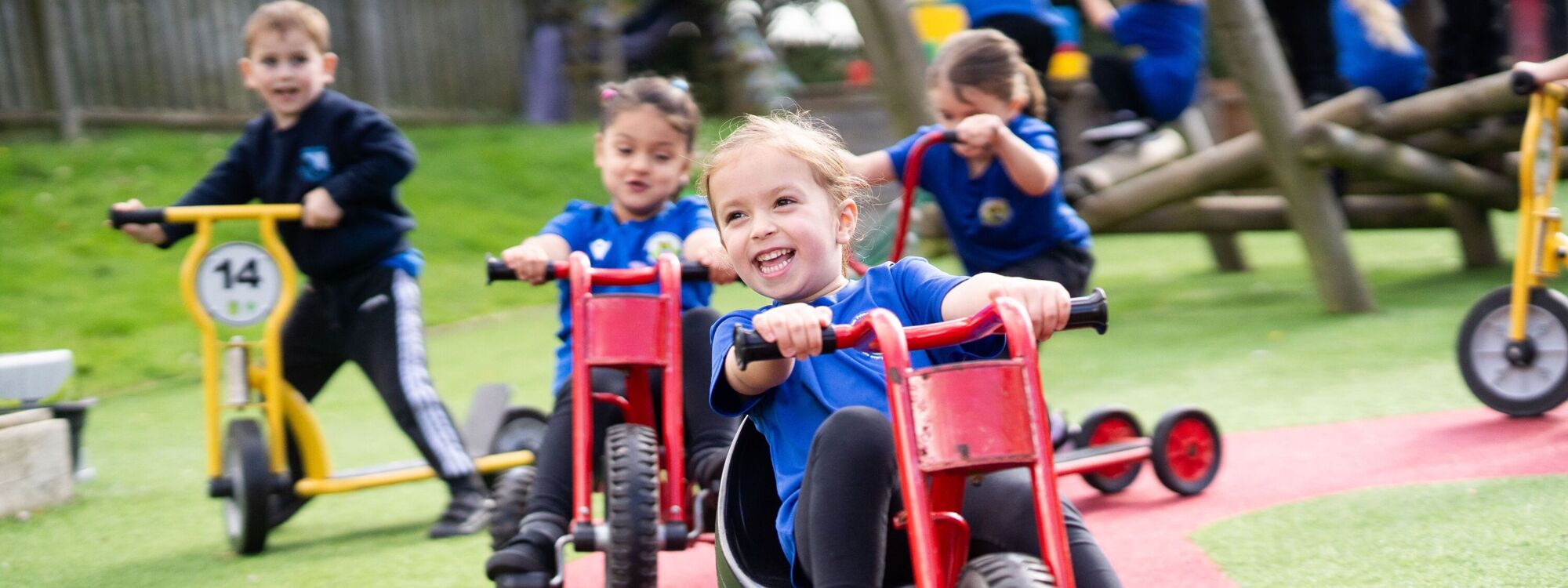- Home
- Parents
- Admissions
- Admission to EYFS
Admission to EYFS
EYFS - Starfish Class
We are very proud of our Starfish Class (EYFS). They have a large, airy classroom environment with an incredible outside area.
The classroom is divided into different learning areas, such as a home area, a writing area, art area etc. there is a large carpet area for the children to use when listening to their teacher or working as a whole class.
Outside, the class can access a mud kitchen, climbing area, track with cycles and scooters, sandpit and water areas, home corner and more. Under the large canopy, children can shelter or have shade, dependent on the weather. Their large outside area has an astroturf surface so can be accessed throughout the year.
The children start the year using just these areas and slowly build up time, when confident, to access the main playground with other year groups.
Starfish class have their toilet and cloakroom areas attached to the classroom so they are easy to access at any time. The children go to the main Hall for lunchtimes and assemblies. They use either the playground, field or Hall for their PE and physical development lessons.
Starfish Class is a learning environment which aims at all times to be happy (because we know happy children are receptive, enthusiastic, motivated and responsive) yet challenging (because we know children are capable and that they can enjoy the challenges and achievements that come with it).
At Pebsham, we believe that through planned, purposeful play, children should be able to discover, practice and refine their skills in both literacy and mathematics, as well as learn about themselves, their environment and the wider world.
Our EYFS curriculum develops the children as effective leaners, focusing on their engagement, motivation and thinking skills. These are called the characteristics of effective learning:
-
Playing and exploring – engagement.
Finding out and exploring
Playing with what they know
Being willing to ‘have a go’
-
Active learning – motivation.
Being involved and concentrating
Keeping trying
Enjoying achieving what they set out to do
-
Creating and thinking critically – thinking.
Having their own ideas
Making links
Choosing ways to do things
Starfish Class provides a chance for the children to cover the seven areas of learning yet responds to and adapts to meet the needs and interests of the individual pupils.
We promote positive attitudes to learning and believe that supporting their enthusiasm for knowledge and developing the confidence in their own abilities will support them in their journey to become successful learners.
What to expect, when?
The Early Years Foundation Stage Framework (EYFS) sets out the learning and development stages for children as they grow from birth to five years.
Children learn and develop through playing, exploring, being active, creative and being asked questions to help their thinking.
The guide below supports parents to understand more about the EYFS curriculum. There are lots of handy hints and tips to inform parents as to how they can support learning and development for their child.
Supporting your child: Home and school working together
Each week, Starfish children will take home:
-
a picture book for parents to read to their child
-
a reading book for the child to read (when they are ready)
-
letter formation sheets (one per day)
A child's first reading books will contain simple words to read which correspond to pictures. This will help the child to blend letters together in order to read words with increasing confidence and speed. When they are ready each child will bring home 'ditties' - these are short sentences to practice reading.
Children may bring home a book or ditty more than once. They also may bring home books they are familiar with or can read well. This is necessary to increase confidence and enjoyment in reading.
We ask that children read with their parents (read to parents and parents read to their child) every day and make a note in their reading records to let us know how it is going.
